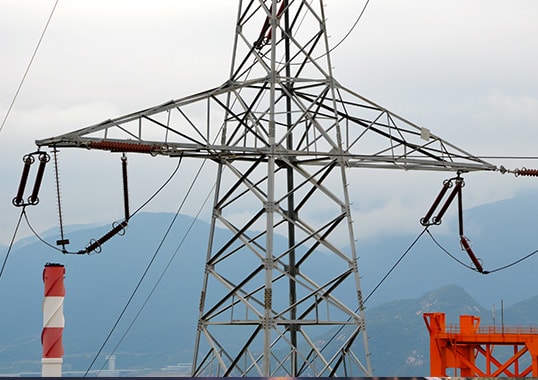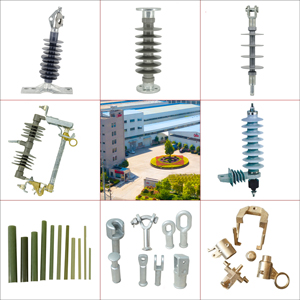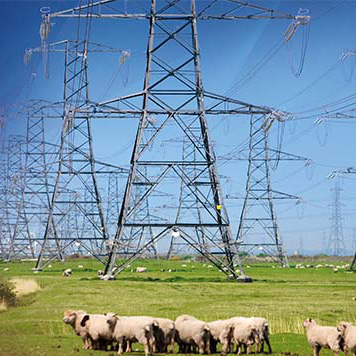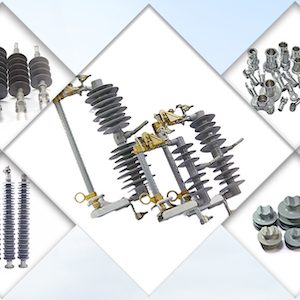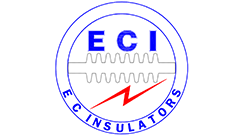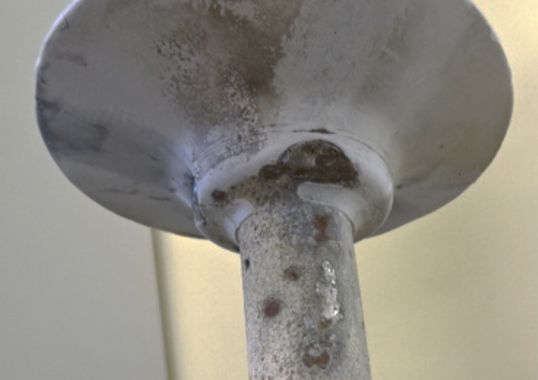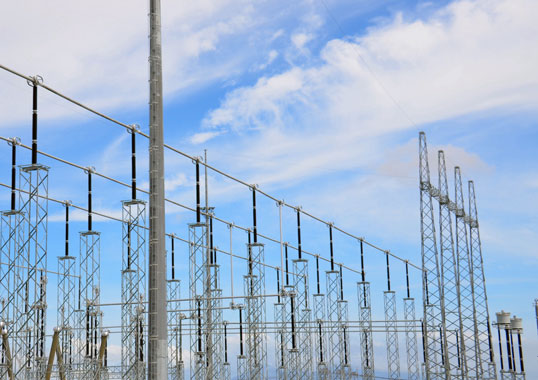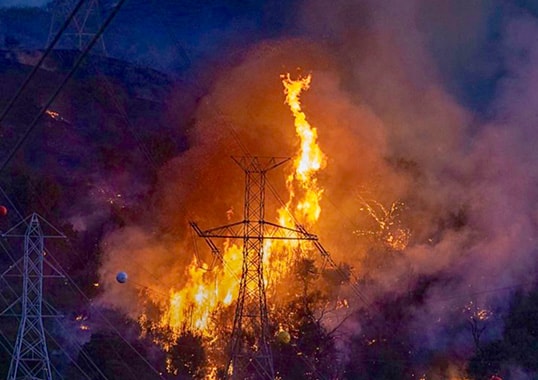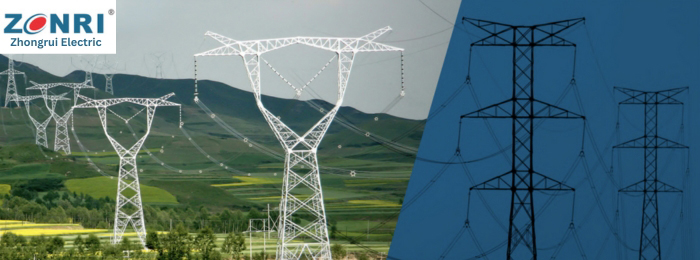Lightning accounts for about 60% of all transmission line trippings in China and is closely linked to season as well as region. Based on the physical processes, lightning overvoltages can fall into two broad categories: those caused by direct strike to the tower, shield wire or conductor; and those where lightning strikes the ground near lines, generating an induced overvoltage on conductors. Experience demonstrates that the former imposes the far greater hazard and that the latter most threatens lines of 35 kV or below.
Based on where a line is hit, overvoltages from direct lightning strike are also of two types. In the first case, lightning strikes a point on the tower or shield wire and the resulting current causes its potential to ground to rise significantly. When this difference in potential between lightning strike point and conductor exceeds the lightning impulse discharge voltage of the line’s insulation, flashover or breakdown of the air gap occurs. By contrast, should the absolute value of the tower or shield wire potential at the moment of lightning strike be higher than that of the conductor, there is back flashover. In the second case, overvoltages generated by lightning bypassing the shield wire and striking the conductor are shielding failures.
The performance of a system’s lightning protection can be measured using two indices – lightning withstand level and lightning related tripping rate. The former refers to the maximum amplitude of lightning current (in kA) that the line can withstand without leading to insulation flashover under direct lightning strike. The higher this is, the better will be the line’s lightning performance. Lightning related tripping rate, by contrast, refers to the number of trips on a line (per 100 km/year) under standard conditions or after being converted to the equivalent of 40 lightning days per year. Lightning tripping rate is therefore a comprehensive index of a line’s lightning protection performance.
Since shield wire is installed along the entire length of a line of 110 kV and higher, it has been widely assumed that lightning related trippings on such lines were due mainly to back flashover and incidence of shielding failure was lower. Recent statistics from China demonstrate the opposite. A few years ago, the lightning related tripping rate on lines operated by the State Grid Corporation was 865, of which 592 (68.4%) were due to shielding failure, 269 to back flashover and 4 to other causes. Moreover, trippings of 750 kV and ±500 kV lines were all due to shielding failure. Indeed, comparative rates of shielding failure as a proportion of all lightning trippings on 66 kV, 110 kV, 229 kV, 330 kV and 500 kV lines in China were 1.6%, 58.4%, 76.1%, 80%, 95.1%, respectively, i.e. the higher the voltage, the higher the percentage of shielding failure related trippings. In one recent year, for example, lightning related trippings in China numbered 741, of which 520 (70.2%) were due to shielding failure, 209 to back flashover and 12 to other factors. Again, the higher the voltage, the higher was the percentage of shielding failure trippings.
Measures to increase the lightning withstand level of a transmission line and reduce lightning related hazards include: decreasing grounding resistance of towers; adjusting protection angle of the shield wire; using a lightning protection differentiation design for double circuit towers; installing additional lightning rods or line surge arresters (TLSAs) in areas with highest risk. Moreover, using lightning monitoring equipment helps in locating and replacing damaged insulators in a timely manner.
Dealing with back flashover has a distinctly different focus than for shielding failures. Decreasing ground resistance of towers is highly effective in preventing back flash related trippings; the main measures to prevent shielding failure are decreasing the wire’s protection angle or installing more lightning rods and line arresters.
The lightning withstand levels of transmission lines in the event of shielding failure are low. Calculated lightning shielding failure withstand levels for 110 kV, 220 kV, 330 kV and 500 kV transmission lines are only 7 kA, 12 kA, 16 kA and 27 kA respectively. In most of China, the probability of a lightning current over 20 kA is 59% and that over 50 kA is 27%. As such, occurrences of shielding failure will typically lead to line tripping and therefore demand that more attention be given to preventing them, especially on higher voltage lines.
Line arresters can significantly reduce lightning related trippings and their practical application has proven remarkably effective. If their cost can be reduced, they would probably be used more widely. At the same time, 1000 kV UHVAC lines have an additional shield wire installed above the center phase conductor on critical sections to increase withstand performance and reduce lightning shielding failures.
It’s also important to increase the lightning withstand level of insulators. Since composite insulators offer superior withstand to pollution flashover, their insulation distances are often shorter than for equivalent porcelain or glass strings. Moreover, a composite insulator’s grading ring’s lightning withstand level may be relatively low. Given that the lightning withstand level of 110 kV lines is already low, the net negative impact on lightning performance when composite insulators are specified can be significant. Chinese power companies have already noticed this problem and their specification of composite insulator lengths is no longer based solely on pollution flashover performance and takes into account the effect on lightning withstand level. Still, as long as the air gap between the grading rings of composite insulators is not less than that on porcelain or glass strings, the line’s lightning withstand level will not decrease.
Finally, any consideration of lightning related hazards to lines must consider not only lightning related tripping rate but also failure rate due to lightning. If reclosing is successful on a line struck by lightning, no interruption in service will result. Given this, installing parallel-connected protection gaps on insulator strings helps keep the arc from a lightning flashover far enough from the surface to avoid interruption due to damaged insulators. The Electric Power Research Institute in Beijing has conducted extensive research on such gaps and this measure should be widely promoted in China as well as elsewhere.

